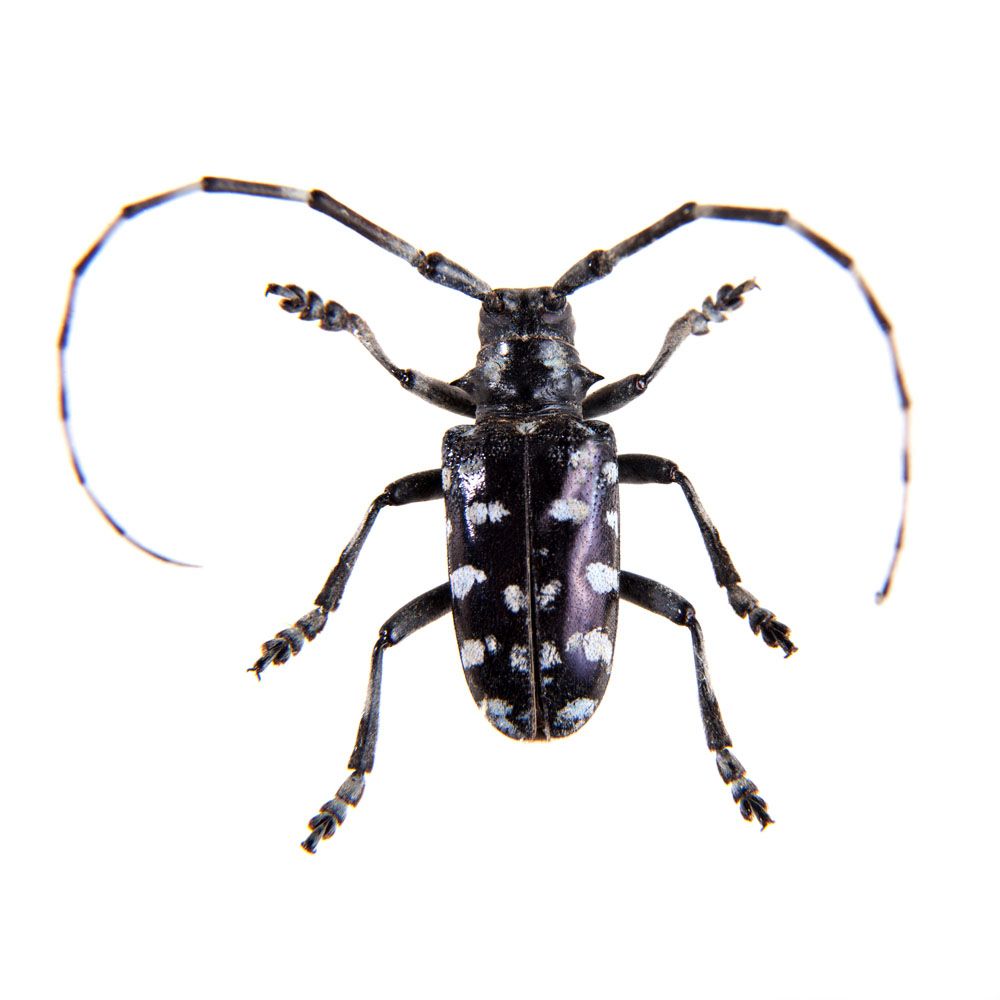
Whitespotted Sawyer – Monochamus scutellatus
Whitespotted Sawyer (Monochamus scutellatus)
Latin Name: Monochamus scutellatus
Common Name: Whitespotted Sawyer
Appearance:
- Adults of this species are born between mid-June and mid-August, and males can grow to double their body length.
- Both sexes have a white patch at the base of their wings, and they may have white dots all over their wings. Adults graze mostly on pine and spruce species for up to seven days after emerging.
- Females carve little egg niches into dead or decaying trees or logs after mating, into which they deposit one egg each.
- Both sexes mate with various partners repeatedly, and females lay between 15 and 20 eggs on average per lifespan. When the larvae hatch, they burrow into the phloem and cambium to feed until they emerge.
